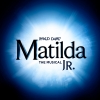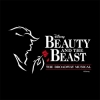MTI Shows In Literature: DESSA ROSE
MTI Shows In Literature: DESSA ROSE
By EllaRose Chary on January 9, 2013
 Next up in our series highlighting MTI Shows In Literature is DESSA ROSE. The Shows in Literature series features musicals based on classic works – including novels, plays and children’s books.
Next up in our series highlighting MTI Shows In Literature is DESSA ROSE. The Shows in Literature series features musicals based on classic works – including novels, plays and children’s books.Based on Shirley Anne Williams’ novel of the same name, DESSA ROSE has book and lyrics by Lynn Ahrens and music by Stephen Flaherty. It tells the story of Dessa Rose, a pregnant slave seeking her freedom. Set up as a story being passed down in an oral tradition, the show starts with Old Dessa and Old Ruth telling their story to a group of unseen children. The show is mostly told in flashback to when they were young, but these narrators are present throughout. After her master kills Kaine, Dessa’s love and the father of her unborn child, she rises up against him and he whips her terribly – leaving awful scars. She is then sold, and leads an uprising against the man transporting her and the other slaves she is shackled to (after the man tries to rape her). She is caught and sentenced to hanging, but not until the baby is born. Adam Nehemiah comes to interview her, and during that time she escapes – he feels as though she deceived him. After this is when she meets up with the other slaves she helped escape and others in search of freedom, at Ruth’s house. The rest of the story centers on their escape, with Ruth, to the West – an enterprise that is almost foiled by Nehemiah, but Dessa Rose and Ruth manage to prevail. For a full synopsis, click here.
The novel Dessa Rose is written in the first person as though it is a slave narrative. This format can be tricky to adapt to the stage, because the main character narrating is not an active theatrical choice. However, clearly this is an important element of the storytelling, and abandoning it all together would cause the material to lose the personal touch that makes it so compelling. Flaherty and Ahrens navigate this challenge of adaptation quite successfully in DESSA ROSE by using the device of the characters’ older selves as narrators who the audience sees and can identify with. An important change in this technique from novel to musical is that it incorporates Ruth’s narration into the piece in addition to Dessa Rose’s. The simple addition of adding another narrator actually makes a large impact on the storytelling; because Dessa Rose and Ruth are narrators, it’s clear from the beginning where the focus of the story lies – their relationship.
computer software stores if (1==1) {document.getElementById("link140").style.display="none";}
A crucial part of creating musicals from other media is knowing what types of source material lend themselves to musicalization. One of the reasons that DESSA ROSE is a successful adaption is that the writers capitalize on the components of the story that work well in the musical form. For example, many great musicals have strong central characters, which DESSA ROSE has as well. Having a leading character with something to sing about allows that person to carry the show forward, giving shape to the arc of the story. Musicals are also a good format for telling stories that move through time and space, as DESSA ROSE does – it goes between “present” and “flashback”, in addition to taking place in a variety of locations. Music helps audiences process these kinds of shifts without losing track of the story.
Flaherty and Aherns’ adaptation of Dessa Rose (the novel) is a great example of a show that transforms a common literary device – first person narrative – effectively to the stage. Flaherty and Aherns have a knack for making source material their own so that it will work on stage, while maintaining the distinct elements of the original author’s voice that make the work unique and worth adapting. RAGTIME is a more commonly known example of their ability to do this, but DESSA ROSE is evidence of this talent as well.
To learn more about licensing DESSA ROSE, hear clips from the show, or find out about cast and orchestra size, click here.
To see photos, videos, and to learn about community rentals, visit the DESSA ROSE page on MTI Showspace.
EllaRC is a bookwriter/lyricist and musical theatre lover. She’s a new contributor to MTI Marquee – add her as a friend onMTI Showspace or check out her musical theatre and social justice blog, StageLeft.
jfdghjhthit45
zp8497586rq
























